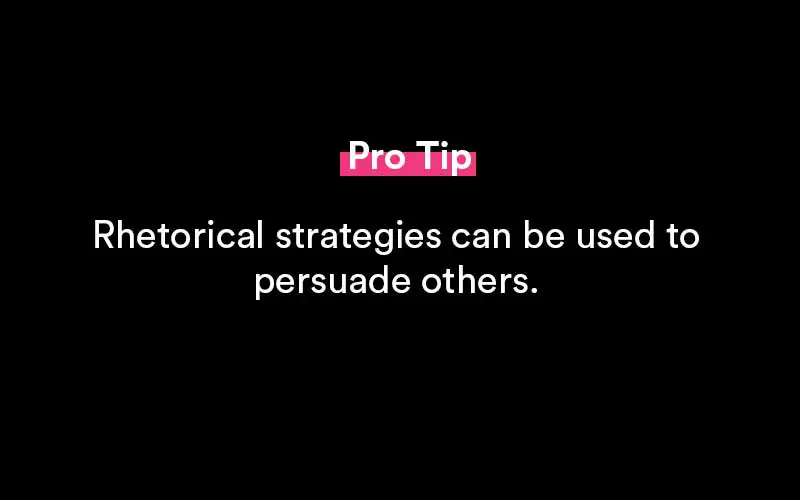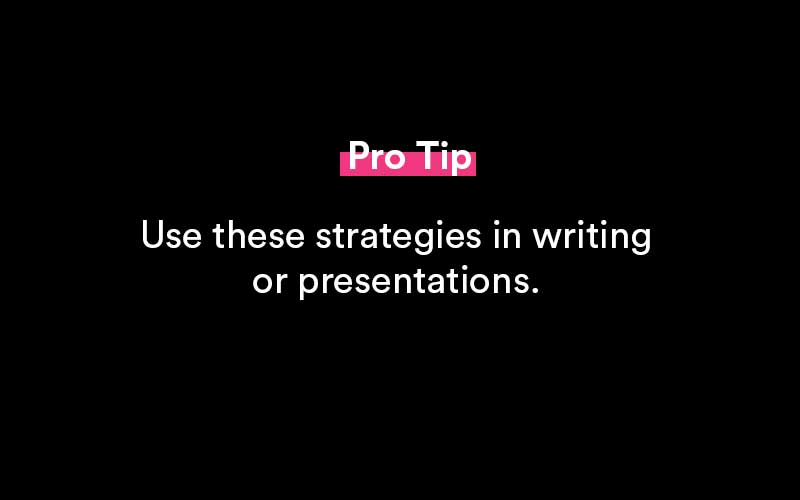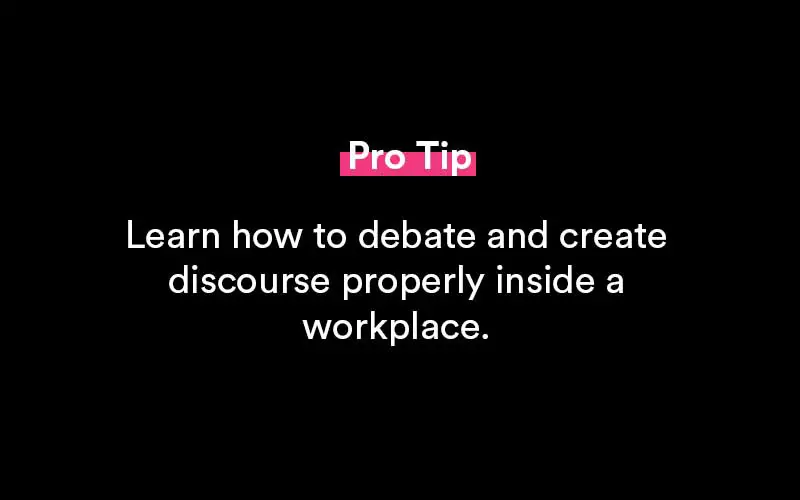Common Rhetorical Strategies (List and Examples)
Rhetorical strategies or rhetorical strategy is the method of which a speaker or writer delivers a swayed message. They can use rhetorical devices of being persuaded in a professional, communicative way.
Using a "rhetorical device" or strategy, someone can engage in ethical appeal, academic discourse, emotional appeal, and generally improve their communication skills.
They can be used to portray a general idea that the writer wishes to express. Or the presenter wishes to express.

In short, it's the question of why a writer/presenter wouldn't use all the words at their disposal to impact the audience's impression.
Though, these strategies can also be used in everyday conversations, to draw attention to an idea or concept. Or to create persuasion by using evidence, and strong sentences of persuasion or a positive statement to support the notion of the idea.
What are rhetorical strategies?
Rhetorical tactics are methods that urge action or convince others via the use of language during a conversation.
These linguistic strategies can be used to control the listener's viewpoints in both written and spoken mediums.
During talks, rhetorical techniques are frequently used. Motivational, political, and even educational speakers use rhetoric to persuade a group to believe or behave in a certain way by highlighting key themes in a planned manner.
It's also an effective argumentation strategy to use during a discussion.
Persuasive strategies or rhetorical appeals include:
- Logos
- Ethos
- Pathos
What is the logos strategy?
While logos may be an effective tool for convincing others, be wary of over-generalizing one statistic to suit a larger situation that may be inaccurate or being overly emotional.
When debating a position that you believe to be true, it might be difficult to stay cool in a discussion, yet relying too much on emotions can be detrimental.
Proof makes people feel more at ease. Your audience will respond more favorably if your position, speech, or book can give reasoning and proof.
In logos, both inductive and deductive reasoning are used:
- Inductive reasoning is a type of logic that is used to solve problems Inductive reasoning is a technique for drawing general conclusions from individual observations and experiences. “The plants in the south window flourish better than those in the north window,” for example, “suggesting that that species of plant prefers southern light.”
- Inductive reasoning is an effective rhetorical approach for persuading your audience to agree with your point of view on a larger issue. Of course, you must be careful not to jump from a few examples to broad, generalizations, otherwise, your listeners may get skeptical.
- Deductive reasoning is a type of logic that is used to solve problems Deductive reasoning is similar to inductive reasoning, except it works in the opposite direction. To put it another way, you start with a broad truth and work your way down to more particular truths. “This book indicates this family of house plants loves a lot of light, so I'll put it in the brightest room in my house,” for example.

When using deductive reasoning, it's critical that the audience accepts your opening truth; otherwise, they'll have a harder time following you to more precise arguments.
What is the ethos strategy?
The listener or reader will judge your credibility based on your ethos.
If the other person does not trust you or your delivery of the facts, they will not be swayed by your argument, no matter how truthful or sympathetic you are.
In order to be effective in rhetoric, you must first establish a strong character in the eyes of the audience.
You may improve the ethos quality of your argumentation style in a variety of methods, including:
- Using and referencing trustworthy sources.
- Creating a connection with the audience.
- Remaining respectful.
- Presenting information that is well-organized and prepared.
- Consider your tone and the audience's relationship with you.
- Providing background and knowledge information.
- Accurately showing opposing viewpoints.
- Creating a common set of values and beliefs.
It's also critical that you detect any grammatical and spelling problems in your written papers, because readers will judge your authority based on your ability to perform the simple things right.
This also applies to speeches, when tripping over a term or mispronouncing a word can detract from your credibility as an expert.
What is the pathos strategy?
Pathos, or interacting with the emotions of the listener, completes the trifecta of persuasive tactics.
While you don't want to be overly emotional when communicating the logic of your position, eliciting emotions from the audience or honoring their beliefs may be highly beneficial.
People are more likely to respond positively to a speaker or writer who makes them feel heard.
With this in mind, never use pathos to manipulate or divert from the topic by appealing to the emotions of the audience.
It should be a strategy employed to advance an agenda's truth, not to obfuscate the true message.
Pathos may also be thought of as the reader's or listener's predisposition to the issue in academic and professional contexts.
In other words, addressing specific demands in your presentation appeals to the audience's pathos if you know the people you're speaking to have specific difficulties with the topic you're discussing.
The emotional attractiveness of your ideas may also be conveyed through storytelling.
For example, a series of spreadsheets may include all of the correct data, but a single narrative of a satisfied client may be far more successful in encouraging your audience to take action.

Common rhetorical strategies
Rhetorical tactics may help anybody in their persuasive efforts, whether they're a supervisor at a major business searching for ways to improve communication with their team or a freshman college student trying to figure out how to send a convincing email to a professor.
Understanding rhetorical techniques may help you perform better in debates, speeches, and written communications.
To improve your persuasive skills and general communication, consider the following widely utilized rhetorical strategies:
Similes
The goal of utilizing similes is to make a connection between two things and bring your audience to a common understanding. Because it grabs attention, this is a common rhetorical approach in literature and writing.
It gives a clearer image of the idea you're attempting to convey. The following are some examples of similes:
- He's busier than a bee.
- It's as tedious as waiting for paint to dry.
- They battled like a pack of wolves.
Metaphors
Many individuals are perplexed by the distinction between similes and metaphors. A comparison term, such as "like" or "as," is used in a simile.
These words, which frequently soften an unusual combination, are not included in metaphors.
Metaphors are more straightforward, insisting on the analogy as one and the same in order to make their audience understand.
Metaphors include the following:
- She is a bright light in the sky.
- The office was a complete wreck.
- Laughter is soothing to the spirit.
- “Reality is a cliché from which we metaphorically flee.” Wallace Stevens (Wallace Stevens)
Anadiplosis
Anadiplosis is a rhetorical technique that employs precise repetition between phrases to highlight a point or a word.
It's accomplished by utilizing the same word or phrase at the conclusion of one sentence as you do at the beginning of the next.
It's utilized to make a point, elicit a sense of urgency in the audience to pay attention, and influence the listener's perspective of the issue. Anadiplosis can manifest itself in a variety of ways.
- Employee motivation is our major aim. Our firm benefits from motivation since it boosts productivity.
- When we win, it's a tremendous win.
- He has an issue. There is an issue with timeliness.
Alliteration
Alliteration, like anadiplosis, employs repetition to draw the audience's attention. Alliteration, on the other hand, is used in a more poetic and lyrical manner, making it suitable for written communication. It's accomplished by repeating a consonant sound in a phrase.
Alliteration twists sounds to make them more attractive or catchy, and it may frequently captivate the recipient's attention. Alliteration can be seen in the following examples:
- Peter Piper took a handful of pickled peppers from the jar.
- Beyond the Bed, Bath, and Beyond the Bed, Bath, and Beyond the Bed, Bath
- Betsy haggled for a blueberry basket.
Rhetorical questions
Questions that are rhetorical in nature. Allowing a question to linger in the air during a lecture, a written engagement, or a simple chat may have a beneficial influence on your audience.
A rhetorical question is one that is asked without expecting or offering a response in return, letting the listener consider it on their own.
A lot of the time, people make decisions based on what others advise them to do.
However, posing a question and allowing people to come to their own conclusions is far more impactful.
Of course, this strategy will only work if the audience agrees with the conclusion you're attempting to persuade them to reach.
To account for this, ensure that the form of a rhetorical question is straightforward before posing it to your audience.
The following are some examples of rhetorical questions:
- Is the rain dripping?
- What are the chances?
- I don't know how many times I have to tell you this.
Hypophora
Inviting your audience to consider a question before delivering a response may sometimes have a positive influence on how they process information.
Hypophora is the term for this rhetorical technique. Hypophora, unlike a rhetorical inquiry, answers to the question it presents right away.
It makes the encounter feel more conversational and open, whether it's a speech to thousands of people or a talk with a buddy. Hypophora can be seen in the following situations:
- Why do we have to work so hard? Because we stand to lose a lot if we don't.
- Who is to blame for your college success? You are the only one who can be held accountable.
- Are deadlines being met in a timely manner? Yes, and it gives me a lot of hope for the future.
Asterismos
By opening a sentence with a powerful word or phrase, this rhetorical tactic draws the audience's attention.
It's something that draws the listener in and makes them feel as though understanding what the speaker is saying is crucial. Asterismos include the following:
- Look, if we're going to accomplish this job, we'll have to work additional hours.
- Employee happiness is critical to a company's success.
- Hey, this is going to be a midterm.
Personification
In the same way that metaphor is a creative and eye-catching means of demonstrating a point, personification is a creative and eye-catching way of presenting a point.
Personification, on the other hand, refers to the process of imbuing nonhuman notions with human traits. This rhetorical technique is frequently used in poetry and written literature.
It offers a fresh and intriguing perspective on a well-known concept. Personification can be shown in the following examples:
- The man's alarm clock begged him to get out of bed.
- The woods spoke to the trekkers in hushed tones.
- The words practically sprang off the paper.
Procatalepsis
Many individuals believe that bringing out the receiver's potential concerns during a persuasive speech or article would reduce your chances of persuading them.
Exposing an audience's unfavorable impressions, on the other hand, can be extremely useful in persuading.
It demonstrates that you've examined a different point of view and are prepared to respond. If you know your audience will have a nagging issue, offering it for debate along with a solution can increase their trust in what you have to say.
The following are some examples of procatalepsis:
- Some may argue that my approach to project assignment is overly relaxed, but I feel it encourages my team to be self-sufficient.
- I'm anticipating your response. The Yankees will never win the World Series, but they have more promise than in previous years.
- You could wonder how I know I'm the best candidate for the job, and to that, I respond that I'm qualified, experienced, and, most importantly, highly enthusiastic about my work.
Euphemism
Some people may be more sensitive to harsh language or words when presenting a wide collection of people from various backgrounds.
Many speakers and writers will use euphemism to lessen the severity of the subject matter or language in order to avoid offending the people they are attempting to persuade.
To preserve a courteous tone and approach, euphemisms are employed. Euphemisms include the following:
- Person who has died vs. dearly departed.
- Employee Layoffs vs. downsizing.
- Over the hill vs. on the verge of old age.
Other common rhetorical terms
We employ a variety of additional figures of speech in everyday discourse as well as in more formal rhetoric:
Anaphora
A rhetorical method in which the speaker uses phrases to repeat a word or a series of words. Dr. Martin Luther King Jr.'s "I Have a Dream" speech is the most renowned example of this.
It's also utilized to make catchy and memorable hooks in a lot of popular songs. Anaphora can be utilized in political, corporate, or intellectual speech with equal success.
Hyperbole
Hyperbole is a figure of speech that entails making exaggerated statements in order to gain more attention. “At my previous poker game, I lost a lot of money,” for example.
Irony
Irony is a difficult rhetorical tactic to grasp since it can be interpreted in several ways:
Verbal irony
Although it differs significantly from sarcasm, you may think of this as sarcasm. Saying something yet projecting the opposite connotation is known as verbal irony.
So it's linguistic irony if someone shuts the door in your face and you say "thanks a lot."
Or if you set the listener up for the opposite outcome, such as when you say, "My trip was as pleasurable as having my wisdom teeth removed."
Dramatic irony
Dramatic irony occurs when the audience understands something that the characters in a performance do not. This isn't commonly utilized in persuasive or rhetorical arguments.
Situational irony
The song "Ironic" by Alanis Morisette is all about situational irony (although not all the examples she gives are, strictly speaking, irony).
Ronald Reagan's assassin firing his bullet-proof vehicle, the bullet ricocheting and hitting the President, is a wonderful historical example of this.
It's strange that the automobile designed to protect the President had a part in his assassination.
Oxymoron
An oxymoron occurs when two seemingly contradictory words or phrases come together. This frequently has a comedic impact, such as "old news" or "deafening quiet."
Allusion
A figure of speech in which you allude to another work indirectly, generally something well-known, so that the audience understands what you're talking about.
Famous references like "crossing the Rubicon" and "Achilles' heel" are frequently used rhetorical techniques.
Apostrophe
Speaking to a person or group who is not physically present, or speaking to a personified object, is an example of apostrophe.
Popular Resources

Featured
35+ Phone Interview Questions & Best Sample Answers
Phone interviews have become a core part of the process when attempting to find a secured placement for an open position. Companies receive massive responses from potential candidates for any..

Featured
12+ Best Questions To Ask A Recruiter
Concerning a job search, you might receive numerous offers from your recruiters. Before you choose one, you need to assess all the conditions, for which it is vital that you know everything associated with the offered position..

Featured
Answering "What Makes You Unique" In A Job Interview
Answering this question during a job interview requires more than knowing why you are unique as an individual. Yes, the true scientific answer is made up of two main components: your..

Featured
250+ Ice Breaker Questions for Life
An ice breaker question is a question that’s asked from one person to another person in order to act as a conversation starter. It brings a connection...

Featured
10 Best Answers to "What Motivates You?"
Open-ended questions like “What motivates you?” can elicit a deer-in-the-headlights reaction from job candidates if they are unprepared. It’s a broad question and can leave the interviewer..

Featured
Answering "How Did You Hear About This Position" In An Interview
A lot of interviewers ask this question - how did you hear about this position? This way they can judge you if you are a passive or an active job seeker..

Featured
8 Best Thank You Emails After an Interview (Samples, Free Templates)
Writing a thank you note after an interview says a lot about you as a potential employee. Most notably, it says that you care about the opportunities presented..

Featured
Writing a Resignation Letter (How To Write It, Samples)
Writing the perfect letter of resignation is more of an art than it is a science. And we’re going to cover how to master that art form in this full guide..

Featured
How to End a Letter (Example Salutations, Sign Off's)
Knowing how to end a business note or email is an important skill to develop. It helps portray a sense of confidence, respect and tone to your message..
